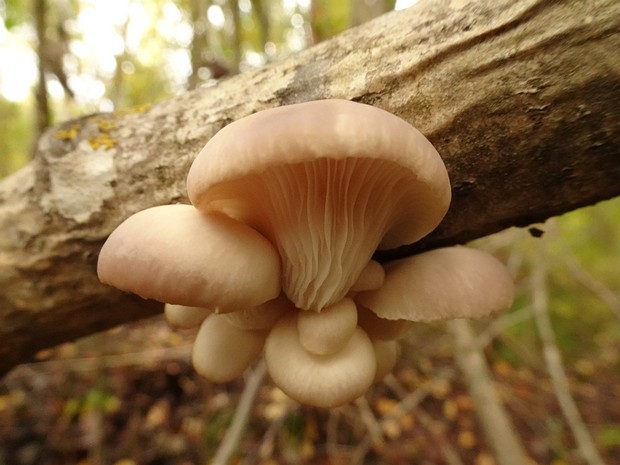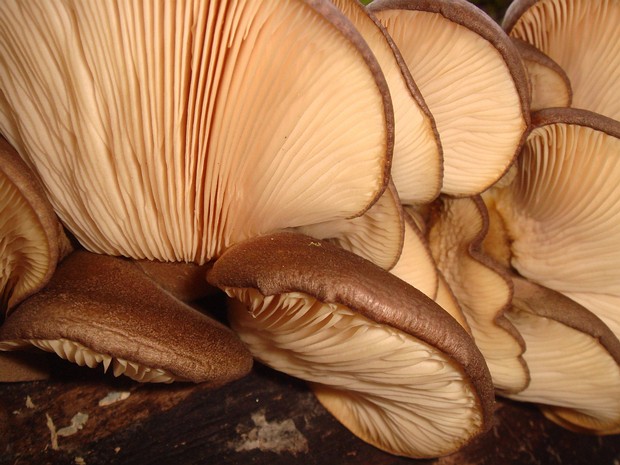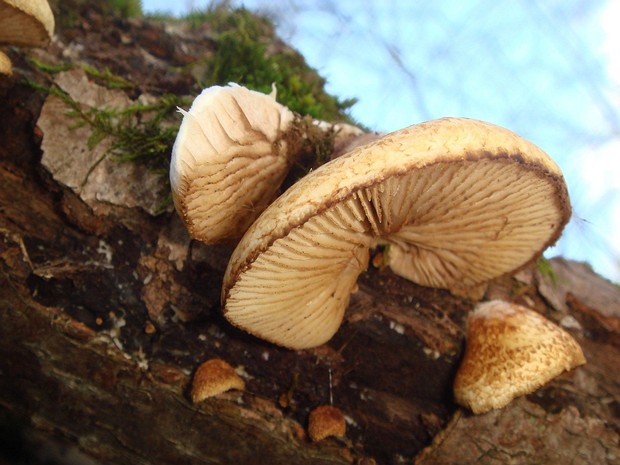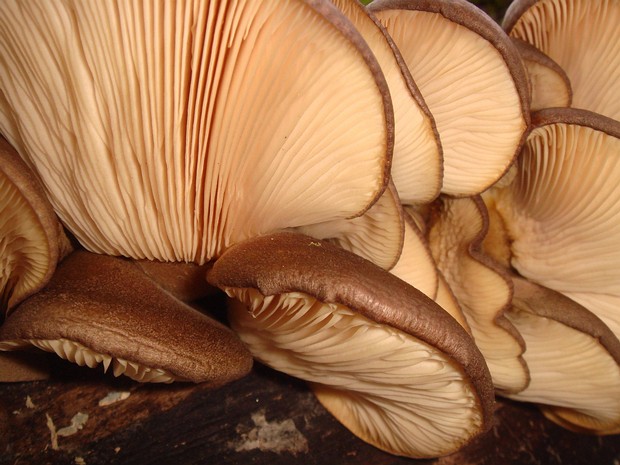Pleurotaceae - Вёшенковые - Pleurotaceae family - Seitlingsverwandte 1/24/09—10/18/25
The Pleurotaceae family, also known as Вёшенковые in Russian, is a family of basidiomycete fungi belonging to the Agaricales order. This family comprises various genera, including Pleurotus, Hohenbuehelia, and Sarcomyxa. Species within this family are characterized by their eccentrically stemmed or lateral fruiting bodies, which often lack a distinct stalk or have a very reduced one.
Members of the Pleurotaceae family are predominantly saprotrophic fungi, meaning they obtain nutrients by decomposing dead organic matter, particularly wood. Some species are also known to form weak parasitic relationships with living trees.
These fungi are widely distributed across the globe, particularly in temperate and subtropical regions. They can be found in various habitats, including woodlands, forests, and on decaying logs or stumps.
The spore-producing surface of Pleurotaceae fungi is usually a smooth or slightly wrinkled surface rather than the gills typically seen in other agarics. Spore prints of these fungi can vary in color, depending on the species, and can range from white to pale lilac.
The number of spores produced by a single fruiting body within this family can vary greatly, depending on factors such as species, environmental conditions, and the size of the fruiting body, but generally, millions of spores can be produced by a single mushroom.
Some species within the Pleurotaceae family, particularly those belonging to the Pleurotus genus, are highly valued for their culinary and medicinal properties. For example, the oyster mushroom (Pleurotus ostreatus) is a popular edible mushroom with potential health benefits.
In addition to their culinary and medicinal value, some Pleurotaceae fungi have also been studied for their potential in bioremediation, which is the process of using living organisms to clean up environmental pollution.
Proper identification is essential when foraging for mushrooms in this family, as some members may have toxic look-alikes.
In German, the Pleurotaceae family is known as Seitlingsverwandte, which reflects the unique growth habit of these fungi, often featuring eccentrically stemmed or lateral fruiting bodies.




